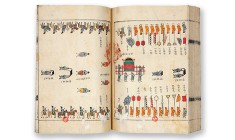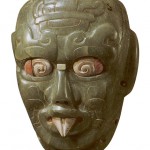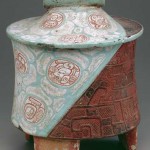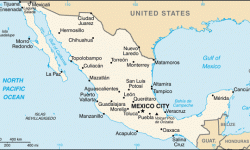Xochipala-style Figurines
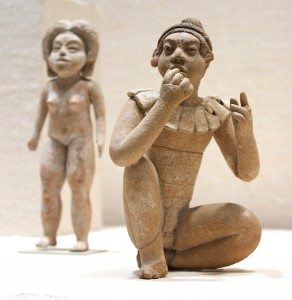
Formative period ‘Mezcala’ figurines from Mexico that are popular on the art market but have never been found in an archaeological excavation.The site of Xochipala (and the village that shares its name) is located in the municipality of Eduardo Neri in the Mexican state of Guerrero. The site dates from the Classic and Postclassic periods (from about 200 to 1400 AD), however on the art market, Xochipala is best known for Preclassic/Formative period (1500 BC to 200 AD) figurines and stone bowls, which are associated with the Mezcala culture.
Because of the linking of the site with this type of Preclassic figurine, the term ‘Xochipala-style’ is used on the antiquities market to describe any piece from this tradition irrespective of whether it actually came from Xochipala or if the piece dates to the Preclassic period. For example: ‘Xochipala does not represent one style or one moment in time. Rather, it is a series of sites of varying periods spanning, to be conservative, some 3,500 years’ (Griffin 1972: 303). In other words, the term is a catch-all that has been roughly associated with a certain conception of the Mezcala culture which originated in the antiquities trade, not among archaeologists.
The Mezcala: defined by looting
Among the pre-Conquest cultures of Mesoamerica, comparatively little is known about the makers of Xochipala figurines, the Mezcala culture (also called the Balsas culture), primarily due to the extensive and early looting of Mezcala archaeological sites. This especially holds true for Preclassic Mezcala sites: the site of Ahuinahuac is the only Preclassic Mezcala site to have been excavated archaeologically (López Austen & López Lújan 2001). Because of this, the features of looted artefacts that have appeared on the art market largely define the Mezcala.
Mezcala cultural sites were mined for antiquities even in pre-Conquest times. One of the largest collections of Mezcala artefacts uncovered by archaeological excavations comes from a dedicatory offering in the Great Temple at the Aztec city of Tenochtitlan, a building built perhaps 1000 or more years after the Mezcala artefacts were carved. The fifty-six masks and ninety-eight figurines (which were not Xochipala-style) recovered from the Great Temple were likely excavated and re-used by the Aztec (Core & Koontz 1962: 55).
Xochipala-style figurines
Xochipala-style figurines are rendered in a highly naturalistic style. They are modeled, not molded, and are solid, not hollow. The figurines that display clothing or garments appear to have been modeled in the nude and thin sheets of clay were later applied to form clothing ‘giving the feel of cloth over the body’ (Griffin 1972: 306). The pieces are often painted in blacks, whites, yellows and reds. Some Xochipala-style figurines are so realistic that they are said to have ‘portrait qualities’ (Griffin 1972: 305)
Because of the early and systematic looting of the region, the state of Guerrero ‘has yielded evidence of prehistoric art styles that have not been associated with identifiable societies’ (Paradis 1981: 196). Specifically, few if any cultural sites that have been excavated can be assigned to the Xochipala-style (Paradis 1981: 196). The site of Xochipala itself post-dates Xochipala-style figurines by several hundred years and no Xochipala-style figurine has been found within a controlled archaeological context.
Griffin (1972: 303) records that according to ‘hearsay’, Xochipala-style figurines were looted from the sites of El Zacatoso (five miles from Xochipala) and Las Mesas (two miles from Xochipala).
Collecting Xochipala-style figurines
In the 1890s, Scottish-born mineralogist and archaeologist William Niven collected a seated female figurine that he was told came from near the village of Xochipala. The figurine, which Niven bought in the city of Chilpancingo, was sold to Harvard’s Peabody museum in 1903 along with other items from Niven’s collection (Niven 1987: 217; Griffin 1972: 303). This would seem to be the first Xochipala-style figurine to be sold outside of Mexico.
Xochipala-style figurines became common on the art market in the 1970s and, thus, in international museums and in private collections. Over the past few decades the Princeton University Art Museum has acquired a number of unprovenienced Xochipala-style figurines, as well as other objects associated with the Xochipala style. These have been donated by: former curator Gillett G. Griffin in 1972 and 2003 (Princeton University 1973: 30; 2004: 139); Peter G. Wray in 1982 (Princeton University 1983: 68)[1]; Peter David Joralemon, formerly a curator at the Lowe Art Museum and now Director of Atlantic Art Partners, in 1983 (Princeton University 1984: 38), and Forrest D. Colburn, a Professor of Latin American Studies at the City University of New York, in 2003 (Princeton University 2004: 139). These donations are notable as two of the donors, Griffin and Joralemon, have produced some of the primary publications concerning Xochipala-style figurines, both describing and defining the style.
References
Coe, Michael D. and Rex Koontz (1962) Mexico from the Olmecs to the Aztecs, (London: Thames & Hudson).
Griffin, Gillett G. (1972), ‘Xochipala: The earliest great art style in Mexico’, Proceedings of the American Philosophical Society 116 (4): 301–309.
López Austen, Alfredo & Leonardo López Luján (2001) Mexico’s Indigenous Past, (Norman: University of Oklahoma Press).
Niven, William (1897) ‘Omitlán, A Prehistoric City in Mexico’, Journal of the American Geographical Society of New York, 29(2): 217–222.
Paradis, Louise Iseut (1981), ‘Guerrero and the Olmec’ In The Olmec and their Neighbors, Edited by: Stirling, Matthew Williams, Coe, Michael D., and Grove, David C., pp: 195–208, (Washington D.C.: Dumbarton Oaks).
Princeton University (1973), ‘Acquisitions’, Record of the Art Museum, 32 (1): 30.
––– (1983), ‘Acquisitions’, Record of the Art Museum, 42 (1): 68.
––– (1984), ‘Acquisitions’, Record of the Art Museum, 43 (1): 38.
––– (2004), ‘Acquisitions’, Record of the Art Museum, 63 (1): 139.
[1] Both the Rio Azul Mask and the Rio Azul Vase are thought to have passed through the hands of Peter G. Wray.
